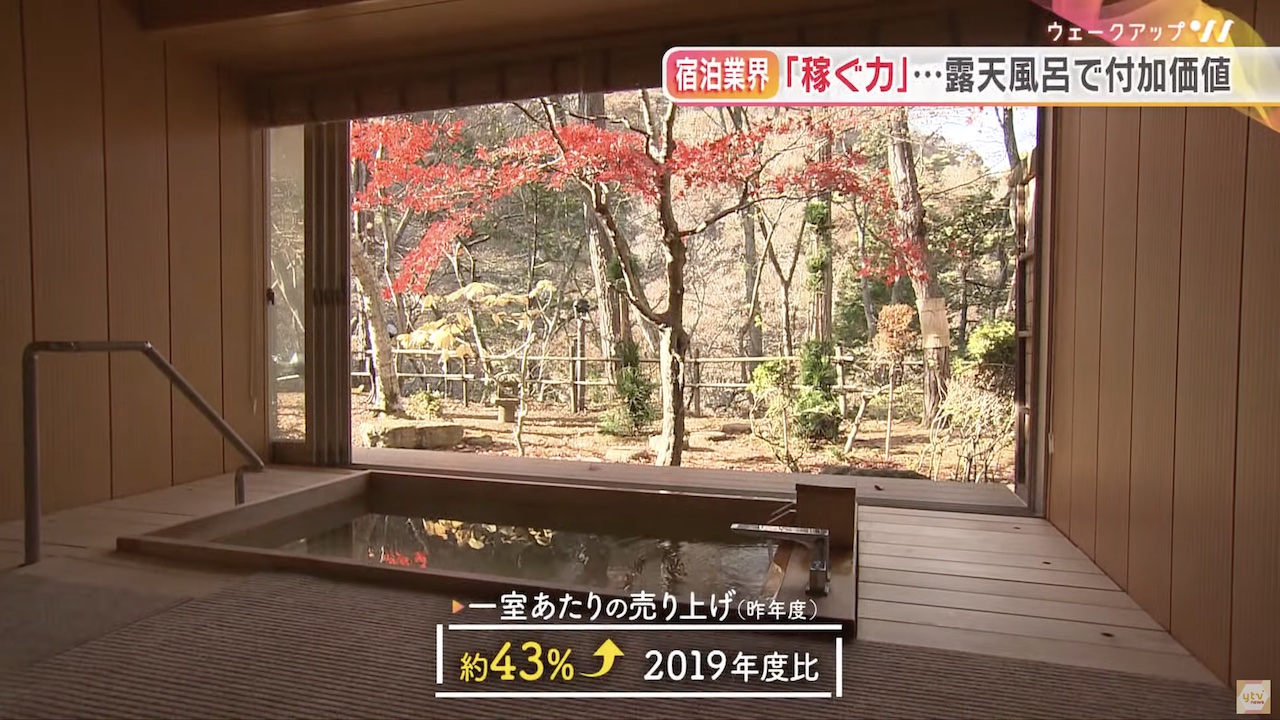TOKYO, Dec 09 (News On Japan) - Domestic travel spending by Japanese residents reached a record high from January to September this year. Additionally, spending by foreign visitors in Japan has already surpassed last year's total, setting a new record. In this environment, accommodation facilities across the country are adopting strategies to enhance their earning power by offering high-value services.
From historic hot spring inns and luxury boutique hotels targeting affluent travelers to architecturally striking vacation homes, the forefront of Japan’s hospitality business is evolving.
Hanamaki Onsen, one of the leading hot spring areas in Iwate Prefecture, features a 97-year-old resort comprising three hotels and inns. Among its offerings are newly added guest rooms with private open-air baths, designed to enhance the guest experience. These cedar bath suites offer uninterrupted views while guests enjoy natural hot spring water. A night's stay, including two meals, costs 63,800 yen per person. Following renovations funded in part by a 200 million yen subsidy, the resort has increased revenue per room by 43% compared to 2019.
One guest, who chose the upgraded room, noted, "Having the bath right in front of us meant we could use it multiple times. It was a unique and relaxing experience."
Six Senses Kyoto, a luxury boutique hotel that opened in April, targets wealthy travelers. With room rates starting at 170,000 yen per night and penthouse suites costing up to 2 million yen, the property emphasizes design that incorporates local culture and natural elements. Despite the high costs, the hotel boasts an 80% occupancy rate, supported by careful investments in quality over quantity. According to the hotel’s CEO, "Our approach emphasizes individuality. Guests are seeking spaces that feel uniquely Japanese yet distinct from traditional hotels."
The luxury villa business is also thriving. Located about three hours by car from Tokyo, the Noa Hotel in Kitakaruizawa offers shared ownership of exclusive villas surrounded by nature. Each property is designed to integrate with the surrounding landscape, offering amenities like private hot springs and saunas. Prices start in the 20-million-yen range, with additional options available based on usage rights. Owners can rent out the property as a hotel when not in use, combining personal retreat space with investment opportunities.
One villa owner shared, "I often come here at night, where I can see shooting stars. It’s something you can’t experience in Tokyo."
Noa Hotel has expanded its operations to include nine locations nationwide and began marketing to international clients in July. A recent project on Sagi Island in Hiroshima Prefecture aims to revitalize a small community where over 70% of the population is aged 65 or older. The new development features villas designed to blend with the island's natural beauty and is expected to open in April 2026.
Local residents hold mixed feelings. While some hope the influx of visitors will bring vitality to the island, others worry about the limited benefits for the community. As one local said, "If the focus is solely on wealthy visitors, ordinary residents may not feel much of an impact."
With innovative strategies to boost revenue through high-value services, Japan’s lodging businesses are redefining how they appeal to both domestic and international travelers.
Source: YOMIURI
















